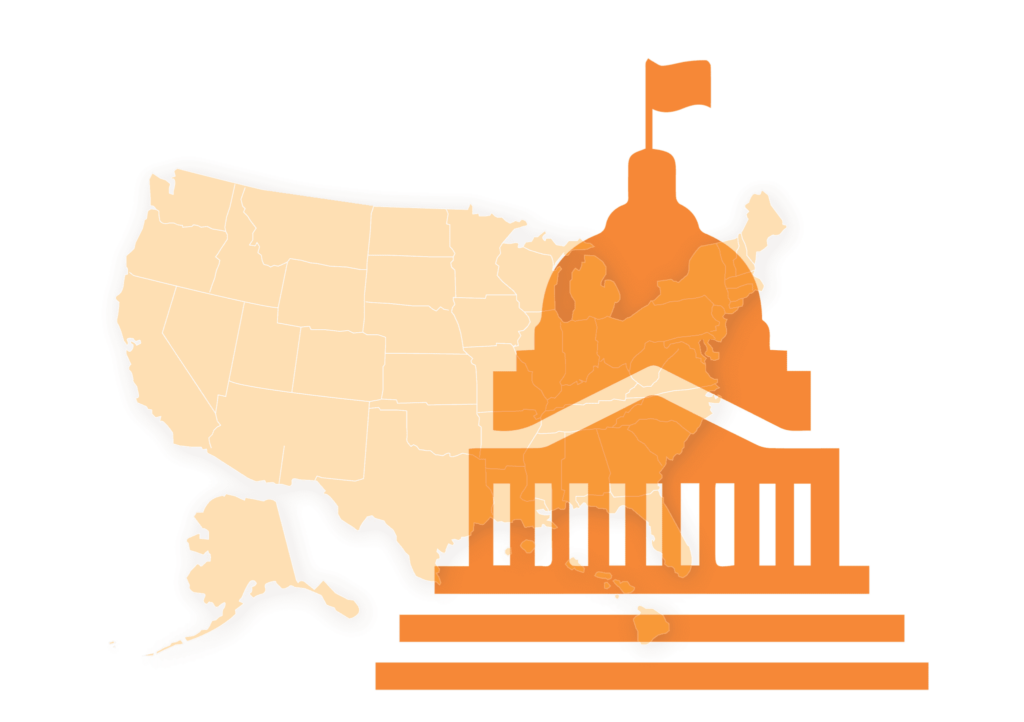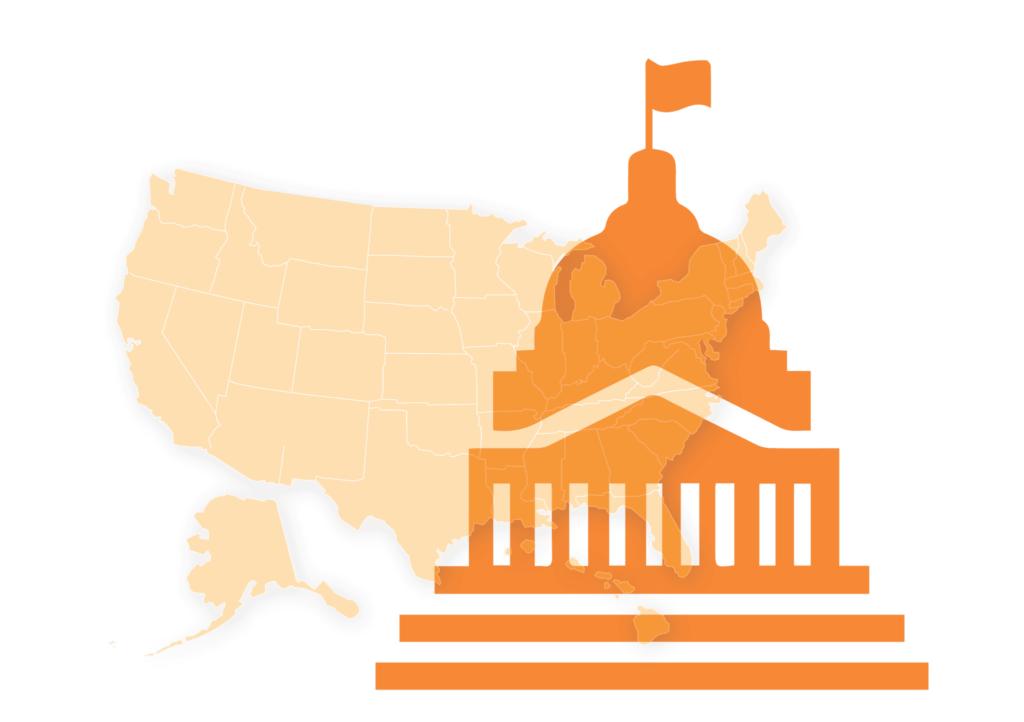On behalf of The Education Trust, a national nonprofit that works to close opportunity gaps that disproportionately affect students of color and students from low-income backgrounds, thank you for the opportunity to present testimony on the Fiscal Year 2024 (FY24) Labor, Health and Human Services, Education, and Related Agencies (L-HHS-ED) Appropriations bill. We request that the L-HHS-ED bill make substantial investments to ensure that essential education programs have the resources they need to ensure the greatest impact for students of color and students from low-income backgrounds.
While there are many programs under your jurisdiction that are critical in facilitating the achievement of students of color and students from low-income backgrounds, in FY24, Ed Trust is focused on the following:
- Strengthening the Pell Grant program by increasing the maximum award to keep pace with inflation, at a minimum, and ideally, doubling the maximum award.
- Supporting teachers and school leaders by including funding at the below minimum levels, alongside related report language:
- ESSA (Every Student Succeeds Act) Title I-A ($20.54 billion)
- Incentivizing states and localities to evaluate their education funding formulas and policies and implement equitable reforms ($100 million)
- ESSA Title II-A ($3 billion)
- The Teacher and School Leader Incentive Program (TSLIP) ($200 million)
- The Supporting Effective Educator Development Program (SEED) ($140 million)
- HEA (Higher Education Act) Title II’s Teacher Quality Partnership (TQP) grants ($300 million)
- Restoring funding to the School Leader Recruitment and Support Program (SLRSP) ($40 million)
- Maintaining FY23 omnibus report language increasing equity in advanced coursework
- Enabling enhanced preparation for teaching candidates at historically Black colleges and universities (HBCUs) and minority-serving institutions (MSIs) by allocating at least $45 million in funding for the Augustus F. Hawkins Centers of Excellence Grant program
- Developing and strengthening evidence-based student success programs by allocating at least $165 million in funding for the Post Secondary Student Success Grant program
- Supporting student parents by allocating at least $500 million in funding for the Child Care Access Means Parents in School (CCAMPIS) program
We urge increased support by the Committee for these crucial programs to help meet the needs of students of color and students from low-income backgrounds.
Strengthening the Pell Grant Program
The Pell Grant program is the cornerstone of federal financial aid. The program benefits over 6 million students annually and continues to serve as the primary federal investment designed to allow students from low-income backgrounds to access higher education. More than one-third of White students, two-thirds of Black students, and half of Latino students rely on Pell Grants every year. Pell Grant dollars are well-targeted to those in need: 97 percent of Pell recipients come from families with annual incomes at or below $60,000; 83 percent of Pell recipients come from families with annual incomes at or below $40,000; and 44 percent of recipients come from households with annual incomes at or below $15,000.
Increase the Maximum Pell Grant Award
The maximum Pell Grant award has failed to keep pace with the rapidly rising cost of college over the past several decades. In 1980, the maximum Pell Grant award covered 77 percent of the cost of attendance at a public university. Today, it covers just over 28 percent, the lowest portion in over 40 years. Bold action must be taken to halt and reverse this damaging trend.
We are appreciative of previous increases to the maximum award in prior appropriations bills, including the $500 increase in the Fiscal Year 2023 (FY23) omnibus, and we respectfully request that you continue to annually increase the maximum award amount. It is also worth noting that nearly 1,200 organizations have gone on record supporting the doubling of the Pell Grant.
In FY24, Congress should, at minimum, increase the maximum award upward from $7,395 to keep pace with inflation. It is also time for Congress to implement an ambitious plan to reverse the downward trend of Pell’s purchasing power through doubling the maximum award, including expanding the mandatory funding stream, ensuring that the maximum Pell award covers at least half of the cost of attendance at a public four-year institution.
Supporting Students, Teachers, and School Leaders
Increase funding for ESSA’s Title I-A; ESSA’s Title II-A (Supporting Effective Instruction); the Teacher and School Leader Incentive Program (TSLIP), the Supporting Effective Educator Development (SEED) program, HEA’s Title II Teacher Quality Partnership (TQP) grants; incentivize states and localities to evaluate their education funding formulas and policies and implement equitable reforms; and maintain FY23 report language supporting increasing equity in advanced coursework.
Ed Trust, building on the prior $850 billion funding increase for Title I in the FY23 omnibus, supports a $2.15 billion funding increase in FY24 budget for ESSA’s Title I-A program. However, it is important to note that most public education funding is distributed via state and local formulas. Therefore, any federal funding increases of this size should be accompanied by levers that encourage states and districts to address the inequities inherent in those formulas. This is a tremendous opportunity to spark systemic reform of the status quo sends $23 billion more to predominantly White school districts than predominantly non-White school districts, per EdBuild. Ed Trust’s own report, released late last year, demonstrated that districts with the most students of color on average receive substantially less (16%) state and local revenue than districts with the fewest students of color, and high-poverty districts receive 5% less state and local revenue than low-poverty districts. Furthermore, districts with the most English learners receive 14% less state and local revenue, compared with districts with the fewest English learners.
We urge the committee to think boldly about how make the overall education funding system more equitable, including inserting report language to that effect, and to include the $100 million designated for this purpose within the Biden-Harris administration’s FY24 budget request in the L-HHS-ED Appropriations bill.
Furthermore, research and experience show the powerful impact that teachers and school leaders have on student learning. ESSA’s Title II-A program provides grants to states and districts that can be used to invest in and develop educators. These funds can be used to, among other things, address inequities in access to effective teachers and school leaders, provide professional development, and improve teacher recruitment and retention. States and districts can also apply for additional competitive grant dollars for programs like TSLIP and SEED, which are targeted at specific, evidence-based strategies for improving teacher and school leader effectiveness and increasing educator diversity. Additionally, HEA’s Title II TQP grants, awarded to partnerships between high-need districts and teacher preparation programs at institutions of higher education, can be used to recruit underrepresented populations to the teaching profession. As Ed Trust’s work continues to demonstrate the positive impact that diverse teachers and school leaders of color can have on the academic achievement of both students of color and White students, we remain supportive of federal dollars to increase and bolster the diversity of the educator pipeline.
Finally, research shows that Black, Latino and Native students, students with disabilities, and students from low-income backgrounds are under-represented in advanced programs and courses (gifted and talented, advanced placement, international baccalaureate, honors courses, dual enrollment, etc.). We support the continuation of report language included in the FY23 omnibus that noted that funds under ESEA (Elementary and Secondary Education Act) may be used to implement open enrollment, automatic enrollment, and/or universal screening practices; to increase course access and success; to provide coaching and training for educators; to purchase materials; and/or cover exam fees for under-represented students. The language also encouraged the Department to resume collecting data on passing rates for all Advanced Placement subject areas.
Considering the nationwide attention to the need to invest in educators, especially as schools work to counteract the negative impacts of the COVID-19 pandemic and combat ongoing educator shortages , Congress appropriated increases for most of these programs in FY23: $2.19B for the Title II-A grant, $90M for the SEED program, and $70M for HEA’s Title II TQP grants, and level funded TSLIP ($173M).
At a minimum, in FY24, Congress should: increase Title I-A to $20.54B; allocate $100M to incentivize states and localities to evaluate their education funding formulas and policies and implement equitable reforms; increase Title II-A, TSLIP, SEED, and TQP beyond FY23 levels: $3B, $200M, $140M, and $300M, respectively, and maintain report language supporting increasing equity in advanced coursework.
Restore funding for the School Leader Recruitment and Support Program
Landmark research funded by the Wallace Foundation has found “virtually no documented instances of troubled schools being turned around without intervention by a powerful leader,” and the School Leader Recruitment and Support Program is the only federal program specifically focused on investing in evidence-based, locally driven strategies to strengthen school leadership in high-need schools. A seven-year study of school districts that created pipelines to develop school leaders saw increasing gains in student achievement over time, showing how a sustained initiative can demonstrate positive effects on student learning.
There is still a great deal of work to do, especially when it comes to identifying and efficiently preparing effective turnaround leaders, as well as sustainably supporting them to accelerate academic achievement, close gaps, and maintain improvement over time for all students and in every community. Developing strong leaders to build essential relationships with students and the communities in which they operate is fundamental to helping students catch up with the unfinished learning due to the COVID-19 pandemic. The SLRSP is a key lever for seeding the next generation of effective school leader development programs, promoting equity, advancing ongoing innovation, and sharing innovative lessons on transformational leadership with the broader field.
In FY24, Congress should restore funding for the School Leader Recruitment and Support Program to at least $40M, the amount included in the FY23 and FY24 President’s Budgets and a moderate increase from what was included in FY22 Senate Labor-HHS-ED Appropriations bill.
Increase funding for the Augustus F. Hawkins Centers of Excellence Grant Program
Research has shown that students of color benefit tremendously from having teachers of color, particularly one of the same racial background: they are less likely to be chronically absent or suspended from school , more likely to be recommended for gifted and talented programs , and Black students from low-income backgrounds who have a Black teacher for at least one year in elementary school are less likely to drop out of high school and more likely to consider college . And while students of color make up the majority of students in public schools, the diversity gap for teachers of color still exists across every state.
The nationwide impact of HBCUs, MSIs, Hispanic-serving institutions (HSIs), and tribal colleges and universities (TCUs) on producing teachers of color cannot be overstated. HBCUs, TCUs, and MSIs, collectively, award only 11% of the nation’s bachelor’s degrees in education, yet they produce more than 50% of the bachelor’s degrees earned in education by Hispanic, Native Hawaiian and Pacific Islander students. HBCUs graduate approximately half of the nation’s Black teachers with bachelor’s degrees. HSIs prepare 90% of Hispanic teachers, and along with other MSIs, constitute a vital pipeline to maintain diversity among our nation’s teachers. The initial investment in this program by Congress was supplemented by the Department of Education recently, resulting in $18M going to 12 different grantees nationwide, including three in Texas , a state with a K-12 student body that is comprised nearly 75% non-White students: Sam Houston State University, University of Houston Clear Lake, and University of Texas-El Paso.
Additionally, to ensure the maximum effectiveness of the program, we recommend the inclusion of the following report language:
“The Committee recognizes the importance of high-quality teacher preparation on student learning and teacher retention, and therefore directs the Secretary to prioritize grants to eligible institutions that propose to establish or scale up high-quality teacher preparation pathways that offer extensive preservice clinical training and mentoring by exemplary teachers in grade and subject areas deemed high need by their state. The Committee also recognizes the value of a racially diverse teacher workforce and directs the Secretary to prioritize grants to eligible institutions that commit to increasing the number and proportion of students of color they serve by providing scholarships or grants, based on financial need, as well as academic supports to help teacher candidates successfully complete the preparation program and state licensure requirements, and to publicly report on these efforts and outcomes.”
Finally, the FY24 President’s Budget proposal recommended continued and additional funding for the program, and a House Dear Colleague letter in support of increasing funding to the program to $45 million is currently circulating. Increasing Congress’ investment beyond the highly appreciated $15M investment made in the FY23 omnibus would provide key funding to HBCUs, TCUs, and MSIs to provide increased and enhanced clinical experience and increased financial aid to prospective teachers of color, who face higher burdens in college access and affordability than their White peers.
In FY24, Congress should allocate at least $45M for the Augustus F. Hawkins Centers of Excellence Grant Program.
Supporting College Students
Increase funding for the Post Secondary Student Success Grant Program
Despite the gains made in high school graduation rates over the past several decades, the fact remains that only 6 in 10 students earn a college degree after six years of undergraduate study, and Black and Hispanic individuals have a lower rate of degree attainment than their White and Asian-American peers. The COVID-19 pandemic exacerbated this problem: undergraduate enrollment has declined by nearly 8% across the board since fall of 2019. These challenges present the possibility of long-term negative effects on students, their families, state and national economies, and the country.
Congress, with the support of 21 organizations including Ed Trust, included a $45M investment in Post Secondary Student Success Grants, an increase of $40M from FY22, in the FY23 omnibus. That is a positive development that we look forward to helping the Department implement, but we will need much more to reverse these damaging trends. Prior proposals from the Biden administration and both chambers of Congress understood the size and scope of the problem of low college completion rates, and we hope the committee will revisit those when deciding how much to invest moving forward. The FY24 President’s Budget proposal included a request for $165M for this concept, as does a House Dear Colleague letter currently circulating. We support that funding level for this appropriations cycle.
In FY24, Congress should allocate at least $165M for the Post-Secondary Student Success Grant Program.
Increase funding for the Child Care Access Means Parents in School (CCAMPIS) Program
Over 20 percent of undergraduate students are parents of dependent children, and within that cohort, 1.7 million are single mothers. As detailed further in this letter from 56 organizations in support of this funding ask, including Ed Trust, increasing the funding for CCAMPIS would provide child care support for approximately 100,000 more student parents, giving them access to the child care services they need to get to and through college. This population is increasing year after year, and in a survey by the Hope Center of over 20,000 student parents, 70% indicated their current childcare provider was unaffordable. Furthermore, an Ed Trust report from August 2022 showed that on average, a student parent would need to work 52 hours a week to cover child care and tuition costs at a four-year public college or university, and that the out-of-pocket costs for attending public college are substantially higher in relation to their childless peers. It is essential that Congress scale up the only program specifically designed to deliver on-campus child care to Pell-eligible student parents, which would dramatically enhance their chances of achieving educational success and financial stability.
In FY24, Congress should allocate at least $500M for the Child Care Access Means Parents in School (CCAMPIS) Program.
Thank you for the opportunity to submit testimony. The Education Trust looks forward to working with Congress to allocate federal funds in a way that addresses the critical equity gaps that our nation’s students from low-income backgrounds and students of color continue to face. We are happy to respond to any questions or concerns that you may have on these topics.
Sincerely,
Denise Forte
President and Chief Executive Officer The Education Trust

 March 22, 2023 by
March 22, 2023 by 





